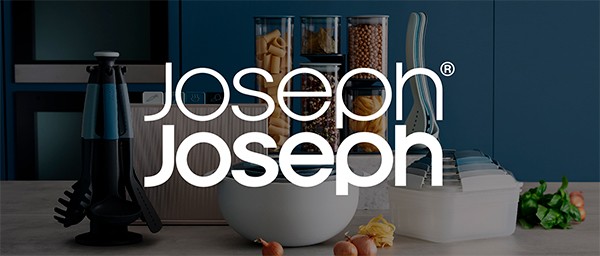



Suitable For Automotive Engine Turbochargers
Suitable Components and Features for Automotive Engine Turbochargers
The automotive engine turbocharger is a high-performance component designed to increase engine power and efficiency by forcing more air into the combustion chamber. To achieve optimal performance, turbochargers require precision engineering, durable materials, and compatibility with the specific engine type. They are suitable for a wide range of applications, including passenger vehicles, sports cars, trucks, and industrial equipment.
Key Features of Turbochargers
1. Compressor and Turbine Design
- Compressor Wheel: Draws in and compresses air for the engine.
- Turbine Wheel: Powered by exhaust gases to drive the compressor.
- Suitability: Aerodynamically optimized designs enhance airflow and boost efficiency.
2. Durable Construction Materials
- Turbine Housing: Made from heat-resistant alloys to withstand high exhaust temperatures.
- Compressor Housing: Typically constructed from lightweight aluminum for efficient cooling.
- Bearings: High-speed bearings made from steel or ceramic for durability and reduced friction.
3. Wastegate or Variable Geometry
- Wastegate Turbochargers: Regulate boost pressure by controlling exhaust flow.
- Variable Geometry Turbochargers (VGT): Adjust the flow area to optimize performance at varying RPMs.
- Suitability: VGT is ideal for modern engines with variable performance demands.
4. Intercooler Compatibility
- Reduces the temperature of compressed air before it enters the engine.
- Ensures denser air for better combustion and performance.
5. Electronic or Mechanical Control
- Electronic Actuators: Provide precise control of boost pressure and wastegate operation.
- Mechanical Actuators: Simpler design suitable for cost-effective applications.
6. Oil and Coolant Systems
- Oil-Lubricated Bearings: Minimize friction and support high-speed operation.
- Water-Cooled Systems: Enhance durability by maintaining optimal operating temperatures.
Applications of Automotive Turbochargers
1. Passenger Cars
- Provides enhanced fuel efficiency and power in compact, lightweight designs.
- Suitable for urban commuting and long-distance driving.
2. Sports Cars and Performance Vehicles
- Increases horsepower and torque for high-speed and dynamic driving.
- Delivers rapid acceleration and improved throttle response.
3. Commercial and Heavy-Duty Vehicles
- Enhances engine output to handle heavy loads and challenging terrains.
- Reduces fuel consumption in trucks, buses, and construction machinery.
4. Eco-Friendly and Hybrid Vehicles
- Improves the efficiency of small engines, reducing emissions.
- Ideal for downsized engines in hybrid or electric-assisted vehicles.
Suitable Engine Types for Turbochargers
1. Gasoline Engines
- Turbochargers improve power output while maintaining compact engine sizes.
- Suitable for small-displacement engines in passenger cars and sports cars.
2. Diesel Engines
- Enhance low-end torque and efficiency, ideal for commercial and off-road applications.
- Reduce emissions while maintaining high performance.
3. High-Compression Engines
- Turbochargers are compatible with engines designed for performance tuning and modifications.
- Support aftermarket upgrades for increased boost pressure.
Benefits of Turbochargers
1. Increased Power and Torque
- Significantly improves engine performance without increasing engine size.
- Allows smaller engines to deliver the power of larger counterparts.
2. Enhanced Fuel Efficiency
- Improves fuel-air mixture combustion for better mileage.
- Reduces overall fuel consumption, especially in diesel engines.
3. Lower Emissions
- Optimizes air intake for cleaner and more complete combustion.
- Meets stringent emission standards in modern vehicles.
4. Compact Design
- Enables engine downsizing without compromising performance.
- Reduces the overall weight of the vehicle.
Maintenance Tips for Turbochargers
-
Regular Oil Changes
- Use high-quality, manufacturer-recommended oil to prevent bearing wear.
-
Monitor Boost Pressure
- Avoid overboosting to protect engine and turbocharger components.
-
Inspect Air Filters
- Ensure clean air intake to avoid debris damaging the compressor wheel.
-
Allow Cool-Down Period
- Idle the engine after driving to allow the turbocharger to cool and prevent oil coking.
Ideal For:
- Car Enthusiasts: Enhance vehicle performance and acceleration.
- Fleet Operators: Improve fuel efficiency and reliability in commercial vehicles.
- Eco-Conscious Drivers: Reduce emissions while maintaining power.
- Performance Tuners: Achieve maximum horsepower with aftermarket turbo upgrades.
Product Information:
Type: Turbocharger
Applicable: Automotive engine turbocharger
Product Packing:
Turbocharger * 1





The product may be provided by a different brand of comparable quality.
The actual product may vary slightly from the image shown.
Shop amazing plants at The Node – a top destination for plant lovers


.png)






.webp)



.jpg)









.jpg)





.jpeg)





.jpeg)



.jpeg)








.jpeg)



.jpeg)

.jpeg)

.jpeg)

.jpeg)




.jpeg)
.jpg)

.jpeg)






.jpeg)
.jpeg)




.jpeg)





.jpeg)


.jpeg)

.jpeg)

.jpeg)

.jpeg)







.jpeg)
.jpeg)
.jpeg)





.jpeg)



.jpeg)






.jpg)
.jpeg)









.jpg)


ulva-Logo.jpg)




.jpeg)



.png)















.png)
























